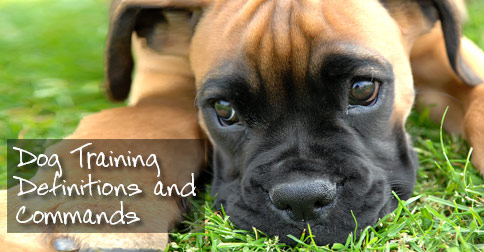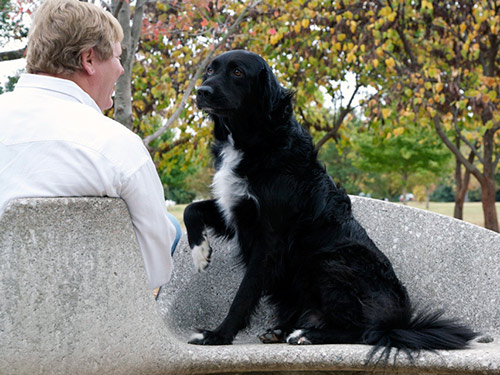 To make the most out of the dog training programs available on this website, here is a list of definitions for you to reference and understand. I use these terms constantly in my training and the various guides on this site.
To make the most out of the dog training programs available on this website, here is a list of definitions for you to reference and understand. I use these terms constantly in my training and the various guides on this site.
Definitions of Dog Training Terms
Specific Dog-Training Commands
The sign is a swipe of your left hand at your side as you start walking.
The sign is bringing your hand from in front of you to your chest.
The sign is a flat palm facing up and bringing it from your waist level up.
The sign is a flat palm facing your dog.
The sign is a point to the mat.
